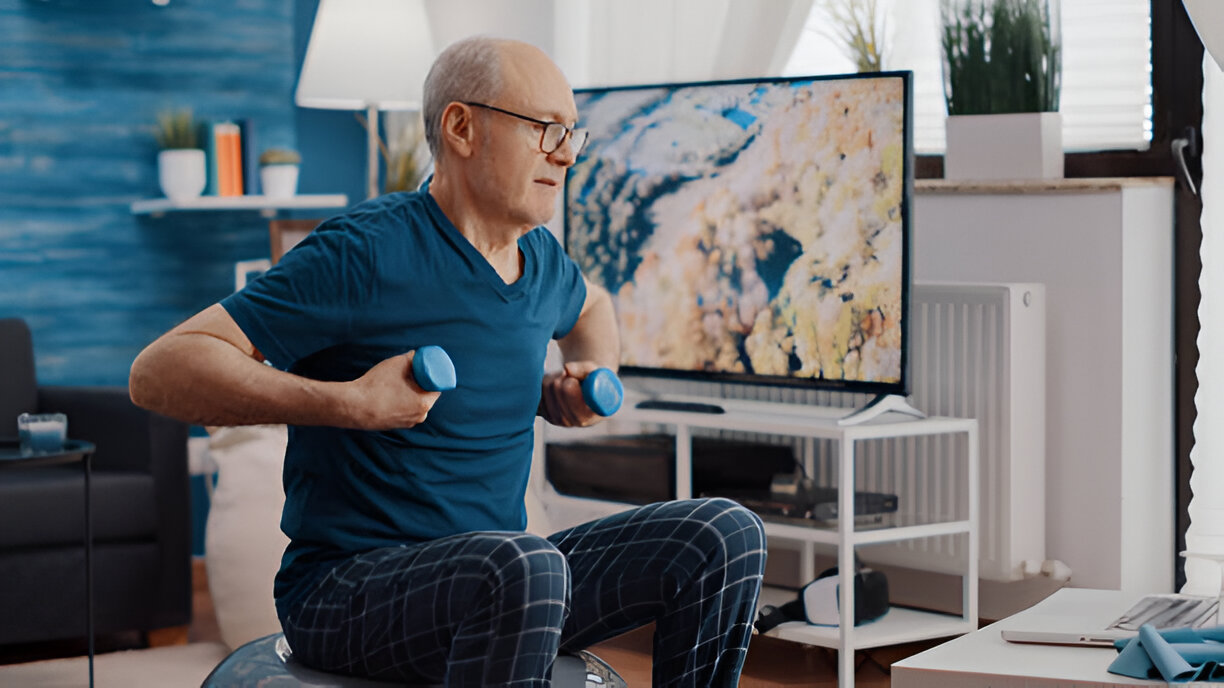Subtotal $0.00
Shopping cart
No Widget Added
Please add some widget in Offcanvs Sidebar
Please add some widget in Offcanvs Sidebar

As we age, staying active becomes increasingly important, and strength training is one of the most beneficial forms of exercise for seniors. Contrary to outdated beliefs, lifting weights or performing resistance exercises isn’t just for the young — it’s a powerful way for older adults to maintain independence, boost mobility, improve bone density, and enhance overall quality of life. In fact, many health professionals now recommend strength training as a core part of any senior fitness plan. With the right approach, it can be both safe and highly effective, even for beginners or those with mobility limitations.
Strength training, also known as resistance training, involves working against a force to build and maintain muscle. This can be done using dumbbells, resistance bands, machines, or even bodyweight. For seniors, the goal is not necessarily to build large muscles but to preserve muscle mass, improve balance, and strengthen the joints. As we grow older, muscle mass naturally declines, a condition known as sarcopenia. Without regular resistance activity, this muscle loss can lead to weakness, instability, and a higher risk of falls or injury. Incorporating strength training can help slow, stop, or even reverse this process.
Beyond muscles, strength training is essential for bone health. After the age of 50, bone density begins to decrease, especially in women. This can lead to osteoporosis, a condition that makes bones brittle and more susceptible to fractures. Weight-bearing exercises stimulate bone growth and increase bone strength, reducing the risk of breaks and falls. Even light resistance training a few times a week can help maintain healthier bones and joints.
Another major benefit is improved balance and coordination. Many strength training exercises engage the core muscles, which play a key role in stability. Strengthening these muscles helps seniors maintain better posture and avoid falls — one of the leading causes of injury among older adults. With consistent training, seniors often find themselves walking more confidently, standing up from chairs more easily, and completing everyday tasks with less strain.
For cardiovascular health, strength training contributes in surprising ways. It improves blood pressure, helps regulate blood sugar, and supports healthy cholesterol levels. While cardio exercises like walking or swimming are also important, combining them with resistance training creates a more balanced routine. Strength workouts can even elevate your heart rate during exercise, giving you a mild cardio benefit at the same time.
When it comes to mental health, strength training is equally powerful. Studies show that resistance exercises can boost mood, reduce symptoms of anxiety and depression, and improve cognitive function. For seniors, this is especially important, as staying active not only enhances physical health but also mental clarity, self-esteem, and motivation.
The key to making strength training safe and effective for seniors lies in selecting the right exercises and progressing gradually. A typical beginner routine might include bodyweight squats to strengthen the legs, seated rows or resistance band pulls for the upper back, and gentle core exercises like seated leg lifts. Using light weights or resistance bands is often more than enough to see benefits, especially in the beginning. The focus should be on controlled movements, proper form, and listening to the body.
Chair-assisted exercises are a great starting point for those with balance issues. Seated bicep curls, leg extensions, and shoulder presses can all be performed while sitting, reducing the risk of falls. Wall push-ups are another excellent move that builds upper body strength without putting strain on the joints. Standing exercises like side leg lifts or step taps can also help improve lower body strength and balance, especially when performed with a sturdy support nearby.
Repetition and consistency are more important than intensity. Seniors should aim to train all major muscle groups at least twice a week, with rest days in between. Each session can include 1 to 2 sets of 8–12 repetitions per exercise, gradually increasing as strength improves. It’s essential to start slow, warm up before every session, and cool down afterward with gentle stretching to maintain flexibility and prevent stiffness.
Before starting any new fitness routine, it’s important for seniors to consult with a healthcare provider, especially if they have existing health conditions like arthritis, heart disease, or joint pain. Working with a personal trainer or physical therapist who specializes in senior fitness can also be very helpful. They can design a customized routine tailored to individual needs, ensuring that every movement is done safely and effectively.
For seniors who may feel hesitant or intimidated by the idea of lifting weights, it’s reassuring to know that even simple activities like lifting grocery bags, gardening, or climbing stairs count as forms of resistance training. Structured workouts don’t always require a gym; they can be done at home using common household items like water bottles or canned goods. The goal is to make movement a regular part of daily life in a way that feels manageable and enjoyable.
Incorporating strength training into a senior’s weekly routine doesn’t just promote physical health — it enhances independence and the ability to engage fully in life. Many older adults report feeling stronger, more energetic, and more confident after just a few weeks of consistent training. Everyday tasks become easier, from getting dressed to reaching for items on a shelf, and the overall sense of well-being improves dramatically.
Ultimately, strength training is a low-cost, high-reward investment in long-term wellness. It’s never too late to start, and the results are well worth the effort. With proper guidance, the right exercises, and a bit of patience, seniors can build strength, prevent injuries, and enjoy a healthier, more active lifestyle well into their golden years.
Sign up to get news about us. Don't be worry your email is safe.
Copyright 2025. All Rights Reserved.